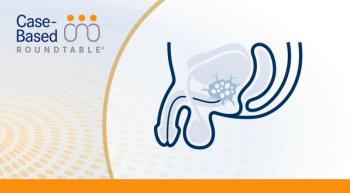
Targeted Therapies in Oncology
- August 1 2020
- Volume 9
- Issue 1
Continuing Anti-Androgens After Abiraterone or Enzalutamide— Is it in the CARDs?
Much of the most important work that must be done during the development of a new cancer medication is often accomplished long after FDA approval, wrote Arjun V. Balar, MD.
Much of the most important work that must be done during the development of a new cancer medication is often accomplished long after FDA approval. It’s what I like to think of as refining or clarifying a novel treatment’s position in the cancer armamentarium, which over time leads to an optimization of patient outcomes. In prostate cancer, 1 of the significant challenges that remained after the initial FDA approvals of novel second generation anti-androgen axis inhibitors such as abiraterone acetate (Zytiga) and enzalutamide (Xtandi), as well as novel taxane chemotherapies such as cabazitaxel (Jevtana), was how best to sequence these medications, and which medications may be, for lack of a better term, “redundant.” This was important for both abiraterone acetate and enzalutamide because both chemotherapies target the same pathway, and there has been significant concern that after failure of 1 of these medications, there was little expectation of meaningful response with the other. Therefore, the choice of which agent to use fi rst was often driven by its safety profile.
The CARD study (NCT0248569), first published in 2019, enrolled and randomized 255 patients with metastatic castration-resistant prostate cancer (CRPC) who had progressed on either abiraterone acetate or enzalutamide to either cabazitaxel or the other anti-androgen previously not received. Not surprisingly, the study demonstrated improved outcomes with cabazitaxel, confirming what many clinical investigators had observed in both retrospective and small prospective series that essentially “more of the same” treatment rarely benefited patients. However, the practice of switching between abiraterone acetate and enzalutamide upon progression with the other is common in clinical practice. Thus, trials such as the CARD study are critical to clarify clinical practice and teach important lessons on how we should sequence medications and moreover, avoid treatments least likely to benefit our patients.
At the American Urological Associations’ Annual Meeting in May 2020, a preplanned analysis of patientreported outcomes demonstrated clear superiority for cabazitaxel with regard to pain response, time-topain progression, and also time-tosymptomatic skeletal events . These domains are essential to patients with the disease and, in some respects, can be viewed as more important than traditional efficacy end points such as progression-free and overall survival, which the study had also met.
I am troubled, however, by the amount of time it takes to get studies like these to launch and to conclude, a problem that may in part be influenced by competing interests in both academia and industry. Nonetheless, I’m glad that trials like CARD continue to receive attention for all the important clinical insights they reveal on how best we can use and sequence the treatments we have, even if they’ve already been available for quite some time. It reminds us that improved outcomes attributed to new treatments can continue to evolve long after FDA approval.









































